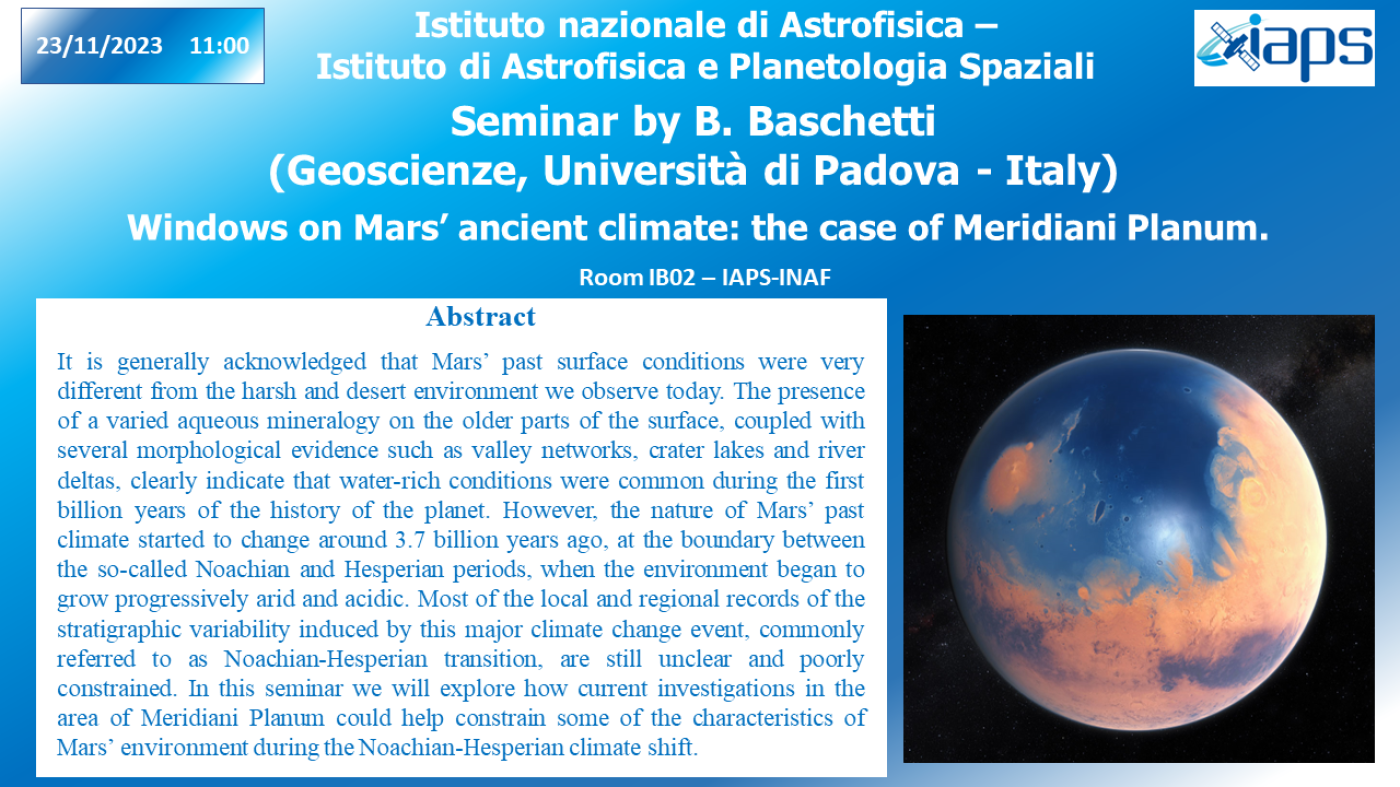Windows on Mars’ ancient climate: the case of Meridiani Planum.
Affiliation: Università di Padova, Dipartimento di Geoscienze

It is generally acknowledged that Mars’ past surface conditions were very different from the harsh and desert environment we observe today. The presence of a varied aqueous mineralogy on the older parts of the surface, coupled with several morphological evidence such as valley networks, crater lakes and river deltas, clearly indicate that water-rich conditions were common during the first billion years of the history of the planet. However, the nature of Mars’ past climate started to change around 3.7 billion years ago, at the boundary between the so-called Noachian and Hesperian periods, when the environment began to grow progressively arid and acidic. Most of the local and regional records of the stratigraphic variability induced by this major climate change event, commonly referred to as Noachian-Hesperian transition, are still unclear and poorly constrained. In this seminar we will explore how current investigations in the area of Meridiani Planum could help constrain some of the characteristics of Mars’ environment during the Noachian-Hesperian climate shift.


